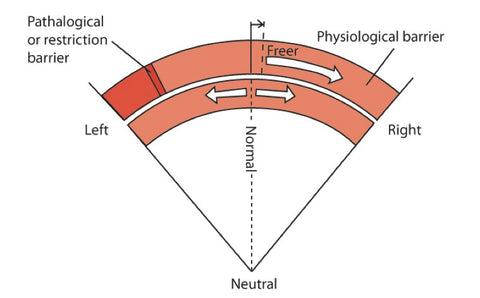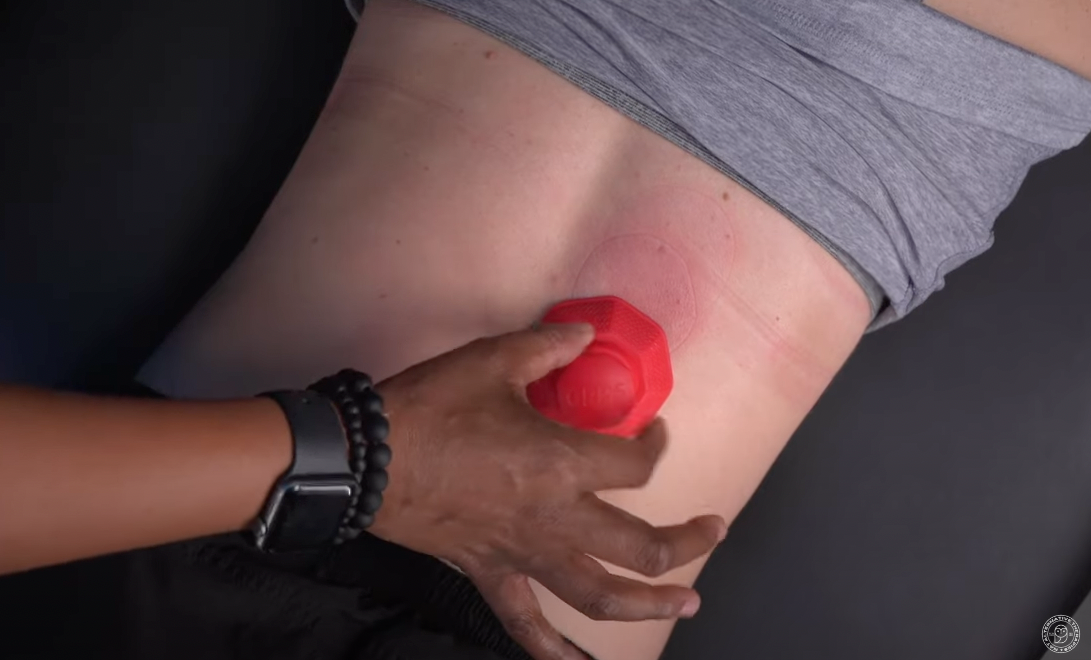Trigger Point Therapy - Muscle Energy Techniques (MET's)
Stuart Hinds - MET for Scalenes/SCM
Muscle Energy Techniques (METs) are increasingly being used to help dissipate trigger points - especially in cases of chronic shortening of the muscles
METs are a broad classification of manual therapy methods directed at improving musculoskeletal function and reducing pain.
Historically, the concept of METs emerged as a form of osteopathic manipulative diagnosis and treatment in which the patient’s muscles are actively used on request, from a precisely controlled position, in a specific direction, and againsta distinctly executed counterforce from the practitioner.
MET was first described in 1948 by Fred Mitchell, Sr., D.O. and METs are today quite commonly used to treat somatic dysfunction, especially decreased range of motion, muscular hypertonicity, and pain.

When you assess a tight muscle or a ‘stuck’ joint, you come to a barrier of restriction, which can be either physiological or protective. This diagram explores the end feel of the barriers.
MET techniques have continued to evolve with significant contributions from numerous practitioners from various professions.
Notably these include Mitchell’s son, F Mitchell Jr.; British osteopath Leon Chaitow; and Czech physician K Lewit, whose work focused on minimising the amount of force employed, as well as the direction and duration of isometric contractions (the basic MET precursor to subsequent movement or stretch).
MET techniques are generally most appropriate for the following injury patterns:
• Decreased range of motion secondary to muscular spasticity
• Rigidity
• Hypertonicity or hypotonicity
Hypertonicity often follows overuse and can result in altered joint position, increased irritability, and decreased elasticity.
This injury pattern is often accompanied by a nonspecific muscle ache in the area of injury.
In the case of an interneuronal injury, when dysfunction occurs at one joint or segment the related agonist muscles are also affected.
If uncorrected, the antagonist muscles eventually become involved as well, leading to dysfunction of both muscle groups.
This presents as decreased range of motion with pain and/or tenderness in the area.
The muscle energy technique is a direct and active method, meaning that it engages a restrictive barrier and requires the patient’s participation for maximal effect.
As the patient performs an isometric contraction, the following physiologic changes occur:
- Golgi tendon organ activation results in direct inhibition of agonist muscles.
- A reflexive reciprocal inhibition occurs in the antagonist muscles.
- As the patient relaxes, agonist and antagonist muscles remain inhibited, allowing the joint to be moved further into the restricted range of motion.
The anecdotal evidence that MET's can be a useful tool in the manual therapy mix is overwhelming, but we do need to know more.
There are currently two peer-reviewed studies that have shown that METs may significantly decrease disability and improve functionality in patients with disorders such as low back pain.

Essential Steps
METs can be applied to most areas of the body. Each technique generally requires eight essential steps:
- Perform or obtain an accurate structural diagnosis.
- Engage the restrictive barrier in as many planes as possible.
- Practitioner and patient engage in an unyielding counterforce where the patient’s force matches the physician’s force.
- The patient’s isometric contraction has the correct amount of force, the correct direction of effort (away from the restrictive barrier), and the correct duration (3–5 seconds).
- Complete relaxation occurs after the muscular effort.
- The patient is repositioned into the new restrictive barrier in as many planes as possible.
- Steps 3–6 are repeated approximately 3–5 times or until no further improvement in range of motion is observed.
- The structural diagnosis is repeated to evaluate if the dysfunction has resolved or improved.
METs and Trigger Points
MET's continue to be refined and systemised by manual therapists and bodyworkers.
We are continually exploring new ways of integrating METs with NAT trigger point therapy protocols, and these are included in our CEU/CPD courses.
Useful Links
Find a Trigger Point Professional in your area
More Articles About Stretching

This trigger point therapy blog is intended to be used for information purposes only and is not intended to be used for medical diagnosis or treatment or to substitute for a medical diagnosis and/or treatment rendered or prescribed by a physician or competent healthcare professional. This information is designed as educational material, but should not be taken as a recommendation for treatment of any particular person or patient. Always consult your physician if you think you need treatment or if you feel unwell.

Learn More for Less

Unlimited access to all CE courses for just $19.95/mo









